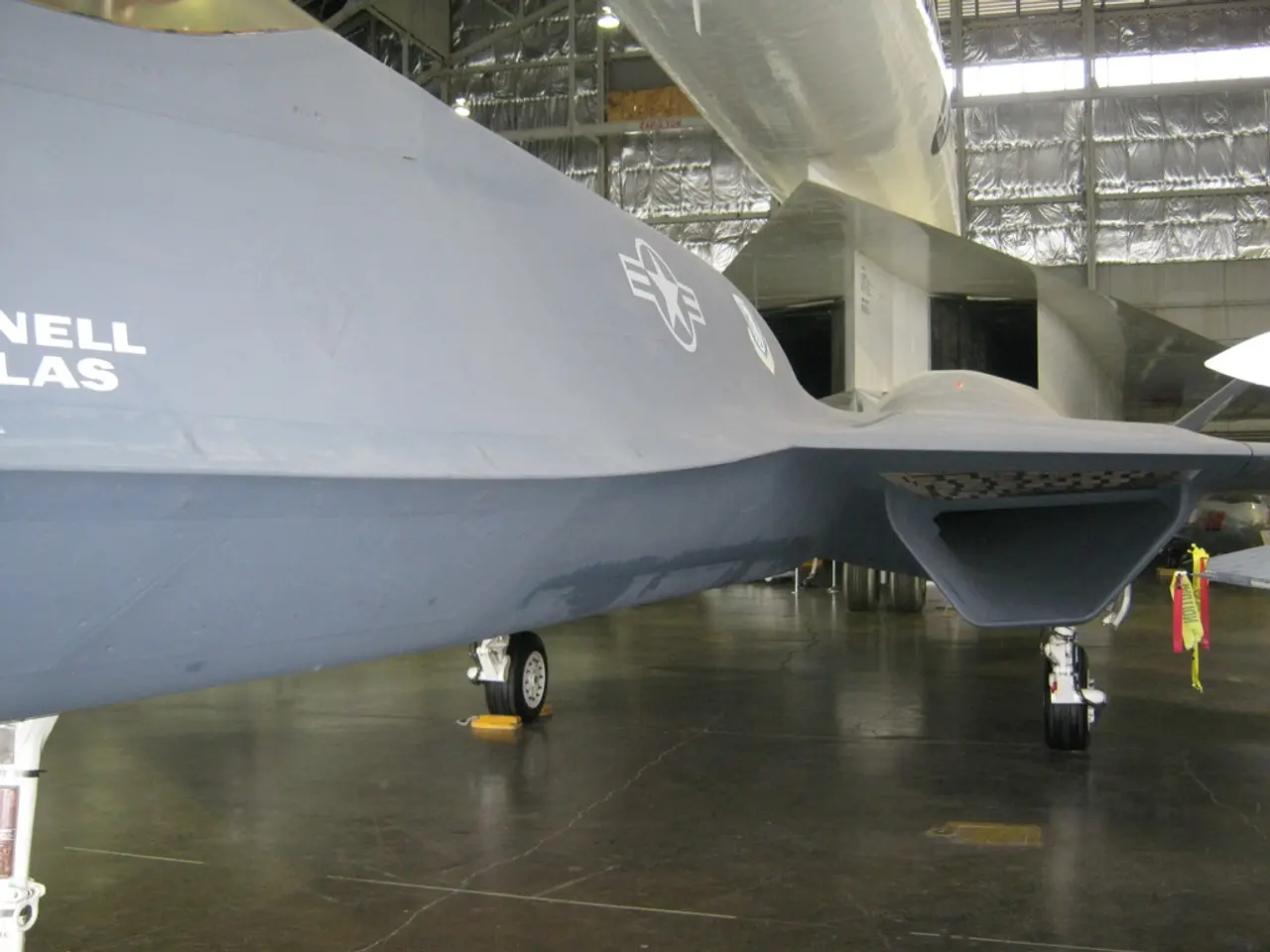American Air Force pilots operate Australian F-35 jet in Pacific region for the first time
US and Australian F-35 Pilots Collaborate in Historic "Interfly" Exercise During Talisman Sabre
In a significant move to enhance coalition interoperability, the United States Air Force (USAF) has conducted its first-ever "interfly" exercise with Royal Australian Air Force (RAAF) F-35A Lightning IIs during the Talisman Sabre 25 exercise.
This historic event marks a milestone in the ongoing efforts to normalize cooperative operations across F-35 units from different allied nations in the Indo-Pacific region. The "interfly" exercise allows USAF pilots to operate allied fifth-generation aircraft seamlessly, a capability that will be crucial in combined future contingencies and conflicts.
The RAAF Lightning-X initiative, launched in 2023, forms the backbone of this collaboration. The program aims to increase interoperability with allied nations' F-35s, enabling pilots to train and operate each other's F-35s as if they were part of their own air forces.
During the exercise, two US Air Force pilots, Maj. Justin "Spike" Lennon and Maj. Colby "Burn" Kluesner, were put in the cockpits of the RAAF F-35As. They operated under the same standards and protocols as Australian pilots, underscoring a high degree of integration and mutual trust.
The flying portion of the "interfly" is the easiest part due to the commonality of F-35 variants, aligned training, and operational practices between F-35 users. The challenge lies in harmonizing considerations such as medical, physiological, egress systems, and human factors, effectively treating coalition counterparts as RAAF aircrew in operational terms.
The U.S. Air Force and RAAF pilots involved received simulator and academic training before being cleared to conduct training flights in RAAF F-35s during the exercise. Lt. Col. Johnny "Yardsale" Rose and RAF Squadron Leader Daniel "Goffy" Goff also participated in the "interfly" and are embedded with two of the RAAF’s F-35 squadrons.
The Talisman Sabre exercise, primarily between the U.S. and Australia, is a biannual event that involves the use of cutting-edge military technology. This year's iteration, which took place last week, involves 19 nations, the most ever, with 30,000 total military personnel. Seaborn F-35s from US and UK aircraft carriers are also participating in the exercise.
By increasing interoperability, the program provides commanders with greater agility and versatility in future conflicts. The ability to deploy any pilot in any allied F-35 aircraft increases combat airpower flexibility and lethality for the coalition. It also enhances shared readiness and defense capabilities, building stronger deterrence and cooperation among key partners in the Indo-Pacific.
The significance of this "interfly" exercise extends beyond the current exercise. It is a step towards normalizing cross-operational capabilities that will be crucial in combined future contingencies and conflicts in the region. This historic event underscores the commitment of the US and Australia to strengthening their alliance and enhancing the interoperability of their fifth-generation fighter jets.
[1] Defence Connect. (2023, June 1). U.S. Air Force pilots fly RAAF F-35s in historic interoperability exercise. Retrieved from https://www.defenceconnect.com.au/2023/06/01/u-s-air-force-pilots-fly-raaf-f-35s-in-historic-interoperability-exercise/
[2] Air Force Technology. (2023, June 1). U.S. Air Force pilots to fly RAAF F-35s in Talisman Sabre 2023. Retrieved from https://www.airforcetechnology.com/news/us-air-force-pilots-to-fly-raaf-f-35s-in-talisman-sabre-2023/
[3] FlightGlobal. (2023, June 1). US Air Force pilots to fly RAAF F-35s in Talisman Sabre. Retrieved from https://www.flightglobal.com/news/articles/us-air-force-pilots-to-fly-raaf-f-35s-in-talismansabre-479210/
- The air force and space force, two branches of the military, are advancing cooperative operations across their fifth-generation aircraft, including F-35s, in the aerospace industry, with financial support ensuring cutting-edge technology and ample resources for training and advancement.
- Pilots from the US Air Force and Royal Australian Air Force will need to harmonize medical, physiological, egress systems, and human factors in order to effectively treat coalition counterparts as their own aircrew in operational terms, improving the effectiveness of combined space and air force missions.
- As part of the military's joint forces, the space force plays a crucial role in the development and deployment of advanced weapon systems, ensuring the coalition's readiness and defense capabilities against potential threats in space and beyond.
- The collaborative effort between the US and Australia is not only limited to air exercises like Talisman Sabre; it extends to the industry, with finance and aerospace sectors working together to increase interoperability and build stronger deterrence across the Indo-Pacific region.
- With a focus on the future, the US Air Force and Royal Australian Air Force continue to strengthen their alliance, charting new paths for cooperation and mutual trust in the field of aerospace, further cementing their status as key partners in ensuring peace and security in the Indo-Pacific.








